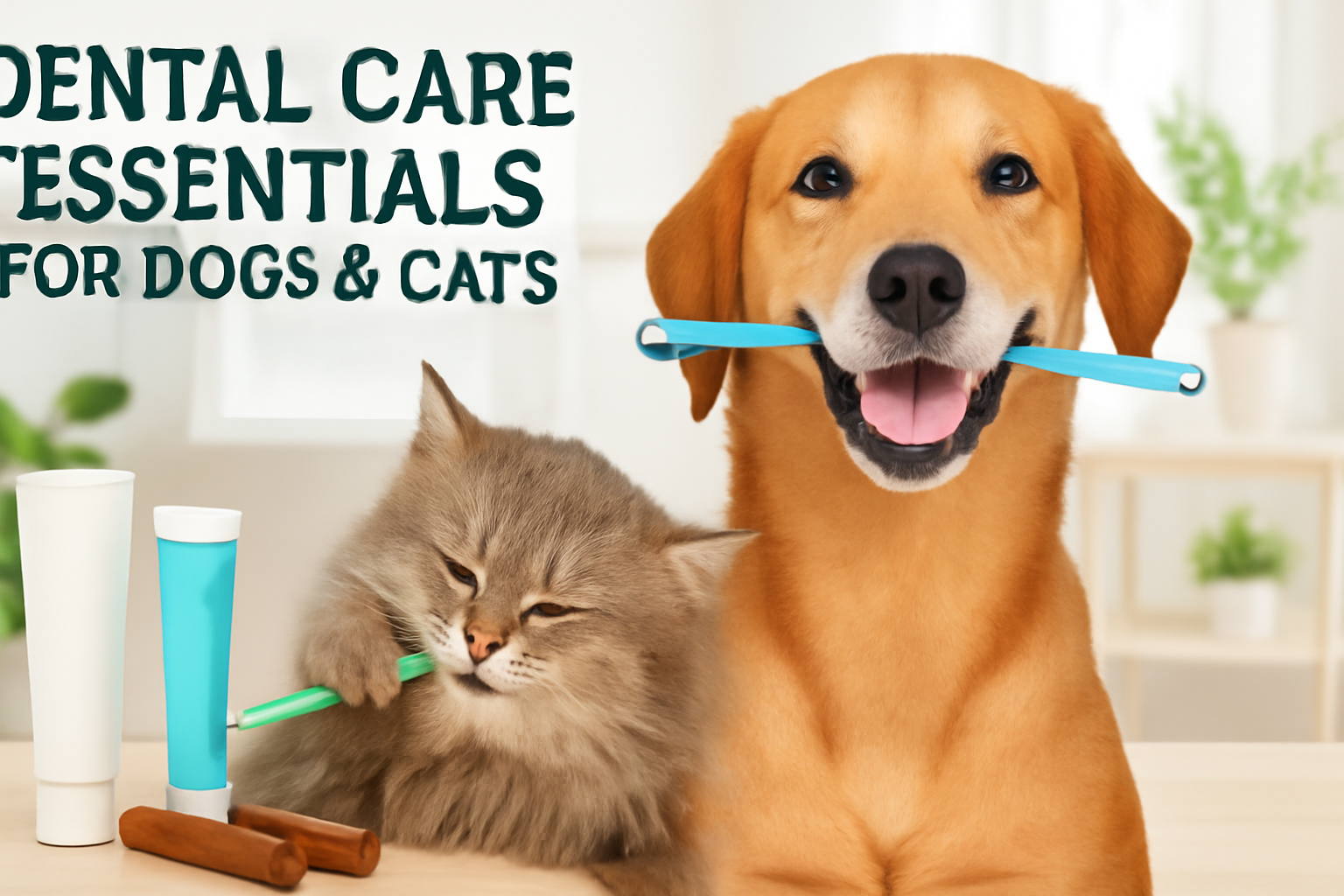Taking care of your pet’s teeth is very important, but many people often overlook it. The health of a pet’s teeth can affect how they feel, behave, and even the health of vital parts of their body, such as the heart and kidneys. Whether you have a Chihuahua, a Persian cat, a Corgi, or a Labrador, establishing a dental care routine is crucial. This guide offers tips for different types and sizes of pets, explains how to care for their teeth, and provides ideas to ensure your pet has healthy teeth.
Why Dental Care is Important
Many pets experience dental problems. Over 80% of dogs and 70% of cats show signs of issues by the age of three. If dental dirt is left untreated, it can worsen and lead to serious diseases, resulting in tooth loss and harming other organs in the body. Caring for teeth at home and scheduling veterinary cleanings are essential for keeping your pet healthy and helping them live longer.
1. At-Home Dental Care: Brushing and Products
Brushing your pet’s teeth is the best way to keep their mouth clean. Use a soft-bristled toothbrush and veterinarian-recommended toothpaste. Ideally, you should brush daily or at least two to three times a week. Start dental care when pets are young, brushing for 30 to 60 seconds.
To aid brushing, consider using water additives or oral sprays. Special dental treats also help maintain oral health.
2. Importance of Professional Dental Cleanings
Annual professional dental cleanings are recommended. Some pets, especially small breeds or older animals, may require cleanings every six months. Blood tests before anesthesia ensure the pet’s safety during the procedure.
3. Brushing Guidelines for Pets
Small Dogs and Cats: Brush three to seven times a week; schedule cleanings every 6 to 12 months.
Medium Dogs: Brush two to three times a week; schedule cleanings once a year.
Large Dogs: Brush two to three times a week; schedule cleanings every 12 to 18 months.
Senior Pets: Increase brushing frequency and schedule cleanings every 6 to 12 months.
4. Recognizing Dental Problems
Watch for signs like bad breath, visible dirt on teeth, red gums, loose teeth, and difficulty eating. If you notice these signs, take your pet to the veterinarian promptly.
5. Treats and Dry Foods for Dental Hygiene
Make dental care fun. Brush for short periods, offer praise, and provide treats. Monitor your pet’s behavior and keep a record of their dental visits.
Summary Table of Dental Care
| Type of Pet | Brushing Frequency | Professional Cleaning | Complementary Care |
|---|---|---|---|
| Small Dogs/Cats | 3–7 times per week | Every 6–12 months | Small treats, dental kibble |
| Medium Breeds | 2–3 times per week | Annually | Medium treats, dental kibble |
| Large Dogs | 2–3 times per week | Every 12–18 months | Large treats, dental kibble |
| Senior Pets | 3–7 times per week | Every 6–12 months | Senior dental diet, soft treats |
Quick Tips for Ideal Oral Health
Start dental care early. Use appropriate tools: a pet-specific toothbrush and toothpaste. Follow a consistent brushing routine.
- Schedule annual professional cleanings.
Be alert for signs of pain or dental disease.
Caring Well:
By incorporating these tips into your pet’s daily routine, you can significantly enhance their dental health, preventing serious issues and ensuring they lead a happy and healthy life with you.
